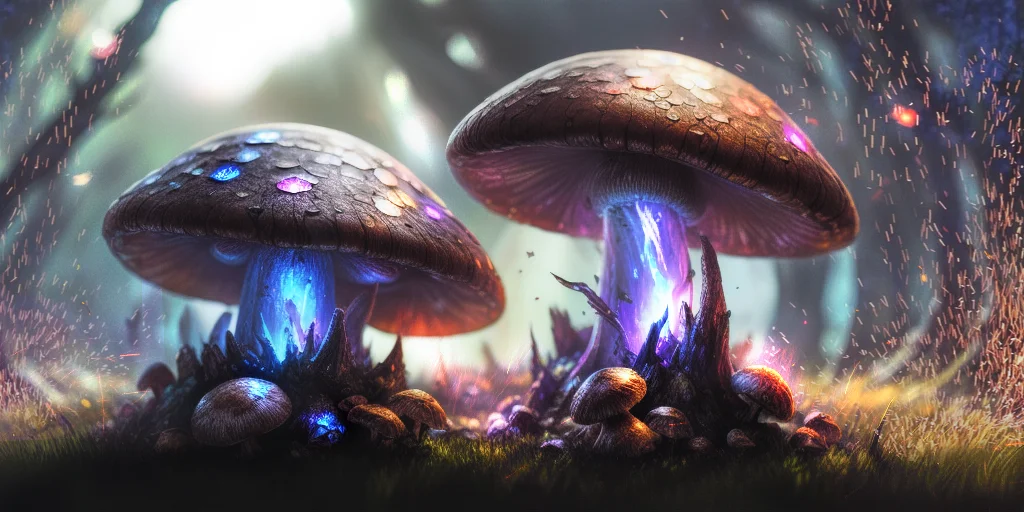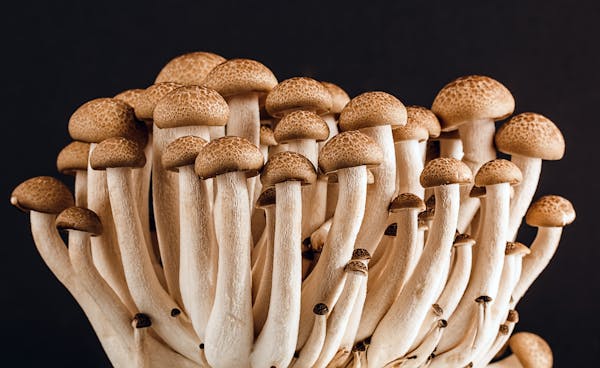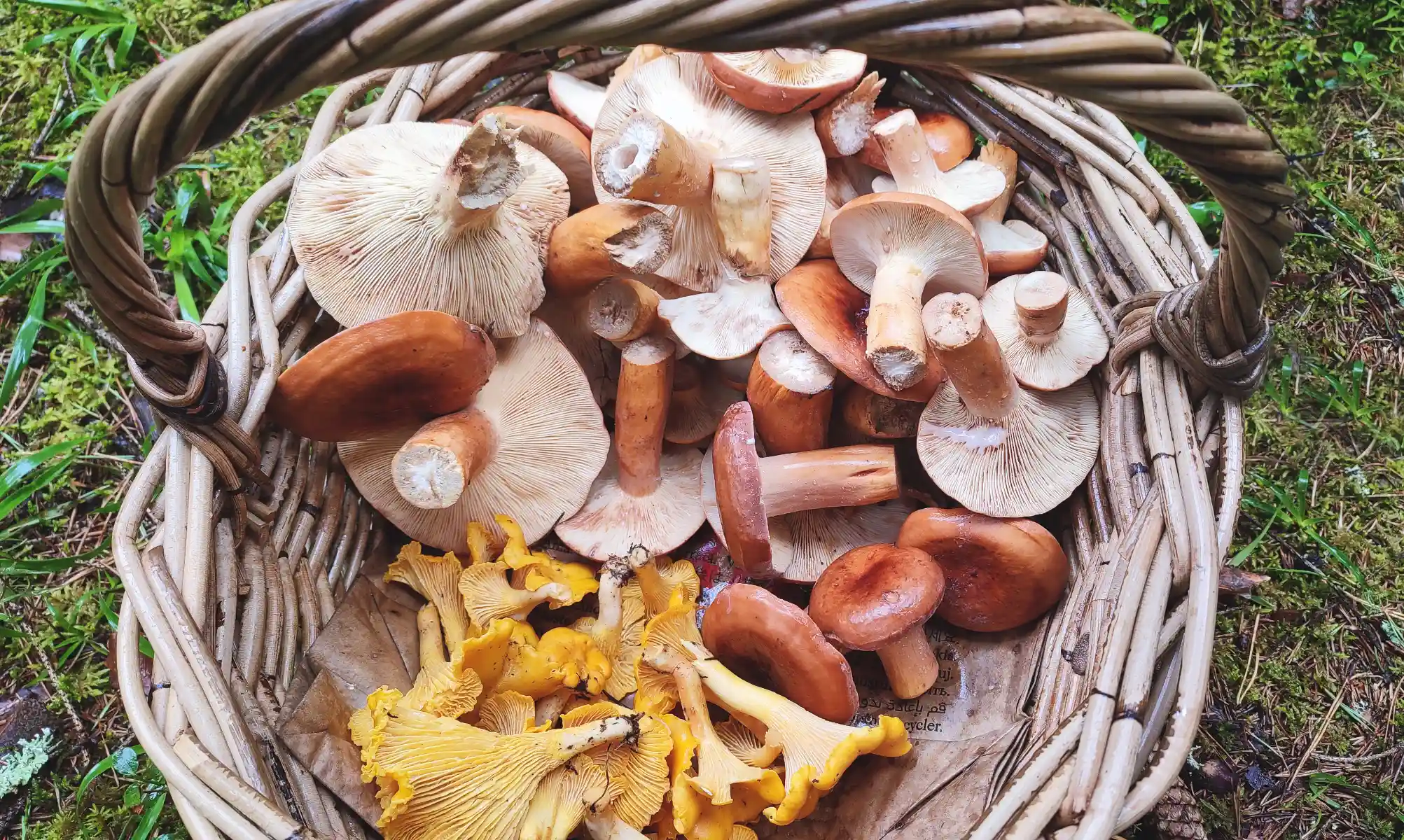Let’s debunk some intriguing myths and facts about mushrooms. Wild mushrooms are captivating organisms that have given life to many myths and legends. Certain people hold the belief that mushrooms can provide immortality, heal illnesses, or cause hallucinations. Nevertheless, not all mushroom myths hold any truth.
Table of Contents
All Mushrooms are Edible; But Some Only Once.
This phrase is well-known in Croatia and former Yugoslavian regions, warning of the risks of eating unknown mushrooms. It is imperative to exercise caution and seek expert knowledge when foraging for mushrooms in the wild.
Mushrooms, fungi, have their own unique biology and ecology. Mushrooms can be delicious, nutritious, and medicinal, but they can also be dangerous if not identified correctly. Therefore, it is important to learn the facts about mushrooms before eating or foraging for them.
Throughout history, mushrooms have held cultural significance. In ancient Egypt, people associated them with the transfiguration into a deity. Various cultures have incorporated mushrooms into folklore and mythology, often with mystical or magical connotations.
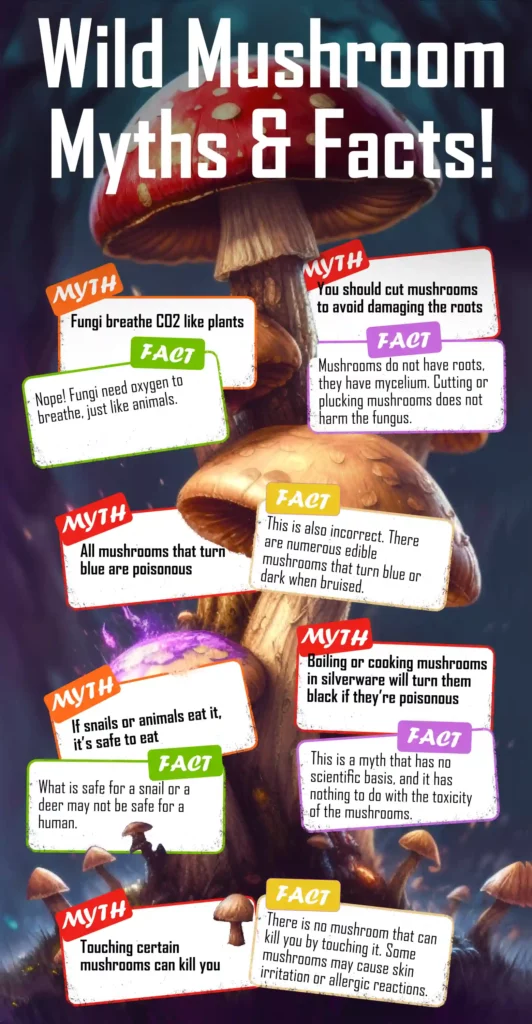
16 Myths and Facts About Mushrooms Debunked!
There are several common misconceptions about mushrooms. These wild mushroom myths include the belief that all wild mushrooms are edible, and that poisonous mushrooms blacken cutlery :).
Lets explore and debunk some intriguing myths and facts about mushrooms:
Myth 1 : Mushrooms breathe CO2 like plants
Fact about mushrooms 1: This is incorrect. Mushrooms, like animals, breathe oxygen and obtain food from other organisms. They play various roles such as decomposers, recycling essential elements like carbon, nitrogen, and phosphorus.
They form symbiotic relationships with plants, aiding in nutrient uptake. Humans and animals consume fungi like button and oyster mushrooms for their nutritional value. Fungi are also used in food production and have medicinal properties, producing antibiotics like penicillin and substances that can lower blood pressure or blood sugar.
Myth 2: Mushrooms are the organism
Fact about mushrooms 2: Mushrooms are the part of the fungus that grows above ground. The main body of the fungus is called mycelium, which consists of threads that are present in the soil or other materials. Mushrooms create and release spores that contribute to the growth of new fungi.
Some fungi can grow by extending their mycelium and connecting with others of the same kind. We call these humongous fungi, and they rank among the oldest and largest living organisms on the planet. One example is the honey fungus, which also goes by the name of Armillaria Solidipes (Armillaria ostoyae). It grows in woodland areas and damages the roots of trees.
It covers about 2400 acres of land in Oregon and weighs approximately 35,000 tonnes. Experts estimate its age between 2400 -8000years, which makes it the largest living organism by area on land. The largest oak fungus or Armillaria mellea in Europe is found in Switzerland, spreading across 35 hectares, and it is around 1000 years old.
Mushroom specialists use various methods to determine if large fungi are single organisms. These include putting samples together in petri dishes and using DNA profiling.
Fungi are interesting living things that do many jobs and affect nature and people. They can be helpful or dangerous, depending on the situation. They can also be huge and old, surprising us with their size and age and making us think differently about what life means.
Myth 3: You should cut mushrooms to avoid damaging the roots
Fact about mushrooms 3: Mushrooms don’t have roots; they have a mycelium network. When handling mushrooms, the key concern is to avoid harming the mycelium. Both cutting and plucking them pose a risk of infection to the mycelium. You are correct whatever technique you choose 😉
If you choose to cut a mushroom, you still leave a part connected to the mycelium behind.
This can serve as a means for pathogens to seep through and contaminate the mycelium. Picking a mushroom may leave infectious material behind, whereas plucking removes it entirely. However, picking mushrooms creates a hole that exposes the mycelium to potential pathogens in the environment.
It is important to cover the hole left behind by gently patting down the surrounding soil. This safeguards the exposed mycelium and helps maintain the fungus’s health. Every method of dealing with mushrooms has advantages and disadvantages. It’s important to be careful when handling them to protect their habitats.
Myth 4: Fungi are always harmful for plants
Fact about mushrooms 4: This is false! Fungi have varied relationships with plants, ranging from harmful to beneficial. Some fungi decompose organic matter and provide nutrients for plants. Additionally, certain fungi form mycorrhizal partnerships with plant roots, boosting their ability to take in water and minerals.
Myth 5: All mushrooms that have red underside (pores) are poisonous
Fact about mushrooms 5: This is false! As there are many edible mushrooms that have red pores, such as Neoboletus erythropus or Suillellus luridus.
Myth 6: All mushrooms that turn blue are poisonous
Fact about mushrooms 6: This is also incorrect because there are numerous edible mushrooms that turn blue or dark when bruised. Like Imleria badia and Leccinum aurantiacum.
Myth 7: You can eat mushrooms raw
Fact about mushrooms 7: This is partially true, as some mushrooms can be ‘eaten’ raw in smaller amount without any harm. However, some mushrooms contain toxins that can cause gastrointestinal upset or other symptoms if eaten raw. Therefore, it is advisable to cook all mushrooms before eating them to avoid any potential risks. Learn how to cook morel mushrooms with simple recipe for turli tava.
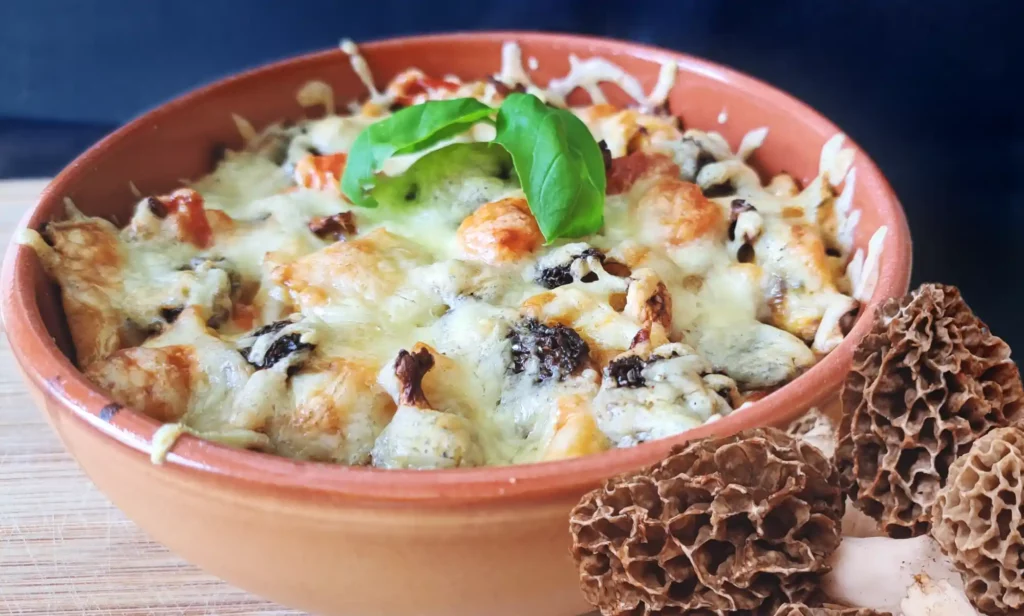
Myth 8: If snails or animals eat it, it’s safe to eat
Fact about mushrooms 8: This is a very dangerous misconception, as different animals have different digestive systems and tolerances for toxins. What is safe for a snail or a deer may not be safe for a human. For instance, certain animals can eat Amanita citrina and Amanita phalloides without any negative effects. But these mushrooms are deadly poisonous to humans.
Myth 9: Boiling or cooking mushrooms in silverware will turn them black if they’re poisonous
Fact about mushrooms 9: This is a myth that has no scientific basis. The color change of mushrooms during cooking depends on various factors, such as the pH of the water. The presence of metal ions, and the oxidation of pigments. It has nothing to do with the toxicity of the mushrooms.
For example, Leccinum versipelle turns black when cooked, but it is edible and delicious. On the other hand, Galerina marginata does not change color when cooked, but it is deadly poisonous.
Myth 10: Mushrooms are plants
Fact about mushrooms 10: Mushrooms are not plants, they are fungi, which belong to a different kingdom of life. Fungi do not have chlorophyll, roots, stems, or leaves, and they do not produce seeds or flowers.
Myth 11: All mushrooms grow on poop
Fact about mushrooms 11: Mushrooms can grow on various substrates, such as wood, soil, compost, dung, or even living organisms. Not all mushrooms grow on poop, and not all poop supports mushroom growth.
Myth 12: Touching certain mushrooms can kill you
Fact about mushrooms 12: There is no mushroom that can kill you by touching it. Some mushrooms may cause skin irritation or allergic reactions in some people, but these are rare and usually mild. The only way a mushroom can kill you is by eating it, if it is poisonous.
Myth 13: Fungi are very closely related to animals
Fact about mushrooms 13: Fungi are more closely related to animals than to plants, but they are still quite distant. Fungi and animals share a common ancestor that lived about 1.5 billion years ago, but they have diverged significantly since then. Fungi and animals have different cell structures, metabolisms, and life cycles.
Myth 14: Every time a mushroom grows the fungus then dies and spores have to germinate again to create the next flush
Fact about mushrooms 14: This is false, as most fungi can produce multiple flushes of mushrooms from the same mycelium. The mycelium is the main part of the fungus that lives and grows in the substrate, and it can persist for years or even decades. The mushrooms are the fruiting bodies that release spores for reproduction. Spores can germinate and form new mycelia in suitable conditions, but they are not necessary for the continuation of the existing mycelium
Learn what to do with parasol mushroom stems

Myth 15: Cooking makes all toxic mushrooms safe to eat
Fact about mushrooms 15: This is not true. Cooking can destroy some of the toxins present in some mushroom species, but not all of them. Consuming toxic mushrooms can cause serious health issues, such as vomiting, diarrhea, liver failure, hallucinations, or even death.
Therefore, it is best to avoid eating wild mushrooms unless you are absolutely sure they are edible and safe. If you are not sure, you can consult a reliable guidebook or an expert before eating any mushrooms.
Some of the most common toxic mushrooms are amatoxins and phallotoxins, which are found in some species of Amanita, Galerina, and Lepiota mushrooms. These toxins affect the liver and the nervous system and can be fatal if not treated promptly. Cooking does not deactivate these toxins, so you should never eat these mushrooms raw or cooked
Portobello mushrooms are a popular type of cultivated mushroom that are usually safe to eat. However, they may contain a compound called agaritine, which has been linked to cancer in some animal studies. Cooking can reduce the amount of agaritine in portobello mushrooms, but not eliminate it completely. Therefore, some experts suggest limiting the intake of raw or undercooked portobello mushrooms and choosing other types of mushrooms instead
The best way to cook mushrooms is to grill or microwave them, as these methods preserve the most nutrients and protein while reducing the fat content. Boiling and frying mushrooms can result in a loss of vitamins and minerals and increase the fat content
Myth 16: Harvesting mushrooms in plastic bags is dangerous
Fact about mushrooms 16: It’s not recommended to collect mushrooms in plastic bags as they can trap moisture and affect their quality.
Mushrooms need air to breathe and stay fresh, so it’s best to store them in a paper bag or breathable basket. This prevents them from getting moldy, slimy, or rotting. If you’re not prepared in the woods and stumble upon mushrooms, you can pick them and store them in plastic bags. Picking them does not render them toxic or dangerous to consume, but refrain from keeping them in bags for an extended period.
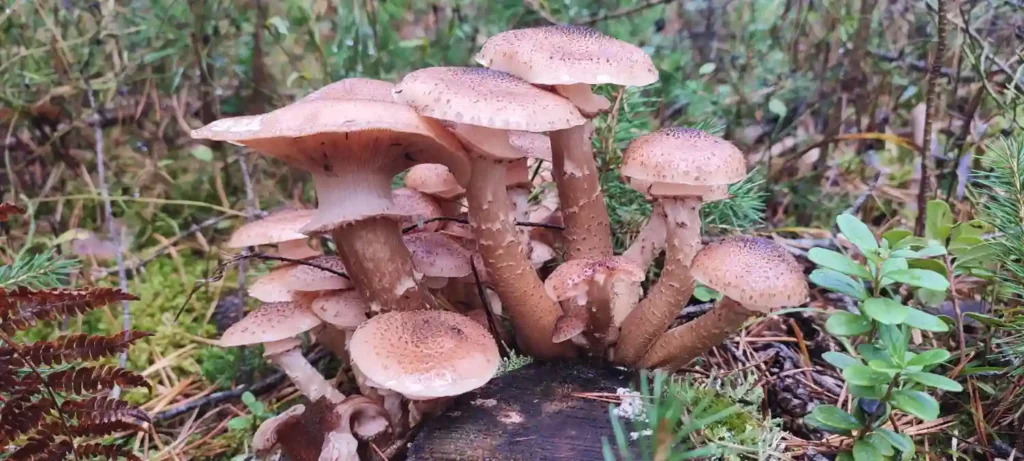
More interesting online resources:
Mushroom Facts – MISSOURI DEPARTMENT OF CONSERVATION
This page is about mushrooms and their role in nature and human society. It explains that mushrooms are neither plants nor animals, but belong to the kingdom of fungi. It describes the life cycle of mushrooms, from spores to mycelium to fruiting bodies. It also categorizes fungi, and gives examples of how they interact with other organisms.
The World’s Largest Fungus – ONLY IN YOUR STATE
This page is about the world’s largest fungus, that grows in Oregon’s Blue Mountains. It is a type of honey mushroom that covers an area of 4 square miles. It is also one of the oldest living organisms, estimated to be between 2000-8000years old.
Popular Turbo Tasty Recipes


